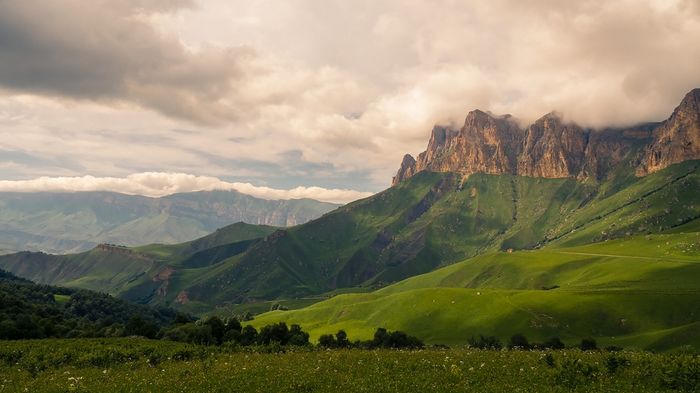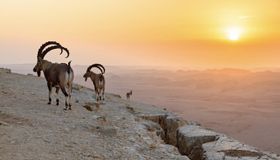Mountains of the Bible: Which Should You Visit?
Updated December 10, 2024.

Some of the most frequently spoken-about landmarks in the bible are the mountains. They are symbolic of strength and stature, and many important events within the bible took place either on or near a mountain. Mountains bring us closer to Christ in both a physical and spiritual sense. Many of them can be found in the Holy Land of Israel, but there are others around the world that are equally as important.
In no particular order, let's take a look at some of the most significant holy mountains in the bible.
A Quick Look at the Most Significant Mountains in the Bible
- Mount Sinai
- Mount Tabor
- Mount Golgotha
- Mount Zion
- The Mount of Olives
- Mount Carmel
1. Mount Sinai
Mount Sinai is also known as Mount Horeb, the Mountain of Moses, Har Sinai (in Hebrew), and Mount Hareh. It is located in Egypt on the Sinai Peninsula, near the city of Saint Catherine. It is 7,497 feet tall.
Biblical Significance
Mount Sinai is the place where God bestowed upon Moses the Ten Commandments.
2. Mount Tabor
Mount Tabor is also known as the Mount of Transfiguration or Har Tavor. It is located in the Jezreel Valley, close to the Sea of Galilee. It is 1886 feet tall, making it comparatively small as far as mountains go.
Biblical Significance
Mount Tabor is where the transfiguration of Christ took place and the place where you can find the Church of the Transfiguration. While the mountain is not mentioned by name in this passage, we see Christ refer to a high mountain. Given the valley that they were in, Mount Tabor would have been the highest point for a good while, allowing us to infer that it is the mountain referred to in the passage below.
3. Mount Golgotha
Mount Golgotha is also known as Calvary and is a skull-shaped hill found in Jerusalem, not far from the river Jordan. Today, it can be visited as a tourist attraction to visit the tomb of Christ.
Biblical Significance
Mount Golgotha is the site of Jesus' crucifixion. Due to the significance of this event, there are multiple passages in the bible where this mountain is referred to. Let's look at one such example.
4. Mount Zion
Mount Zion is located just outside the Old City and is the highest point in Jerusalem at around 2,510 feet tall. The word "Zion" is often used in the bible as another word for Jerusalem. Jerusalem is also known as the City of David, as King David established this place as a home for the followers of Christ.
Biblical Significance
It is said that the Last Supper took place on Mount Zion, in a stone building in a room known as the Cenacle. The Cenacle is located on the upper of the two floors in this building, while the Tomb of David—another biblically significant site— can be found on the lower floor.
5. The Mount of Olives
The Mount of Olives, aptly named for the olives that grow on its slopes, can be found next to the Old City in Jerusalem. It is also known in the bible as Olivet.
Biblical Significance
The Mount of Olives is famed as Jesus' favorite place to pray. More importantly, the ascension of Christ took place there. We know this to be the case as the bible states the following after the ascension:
6. Mount Carmel
Mount Carmel is also known as Har HaKarmel or Mount Mar Elias. It is actually the name of an entire mountain range located in the north of Israel. The mountain range is around 24 miles long and 5 miles wide.
Biblical Significance
Mount Carmel carries great biblical significance as it is where Elijah confronted false prophets from Baal and Asherah.






